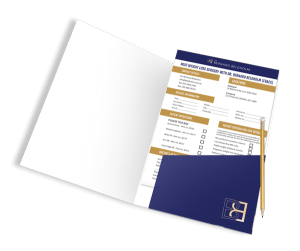Planning Your Thighplasty (Inner Thigh Lift) After Weight Loss Surgery
This article provides information about Thighplasty, a surgical procedure sometimes referred to as an inner thigh lift. It is most commonly considered after significant weight loss when the skin of the upper legs does not contract back. Here you will learn what the operation involves, how it is usually planned, and the common techniques that may be used.
Why does loose thigh skin occur after weight loss?
Following major weight reduction, the skin may not retract to its previous position. On the thighs, this can lead to:
- Skin folds that rub together
- Chafing and irritation in the inner thigh region
- Heat and moisture retention in skin folds
- Rashes or skin infections due to bacteria growing in these areas
For some patients, Thighplasty is one option to reduce excess skin on the upper legs.
What is Thighplasty?
Thighplasty (sometimes referred to as an inner thigh lift) is an operation that removes redundant skin from the thighs, most often in patients after bariatric surgery or major weight loss.
It is often planned as part of a staged approach to body contouring surgery. For many patients, a belt lipectomy is performed first, followed by Thighplasty if needed.
What happens at the consultation?
At the consultation, Dr Bernard Beldholm, FRACS, will:
- Take a full medical history and examine the areas of concern
- Discuss whether other procedures, such as abdominoplasty, belt lipectomy or brachioplasty, may also be relevant
- Outline a staged treatment plan if more than one area requires skin removal
- Provide details about the procedure, recovery, risks, and costs
- Explain eligibility criteria for Medicare rebates, if applicable
Planning your surgery
Because each operation can be extensive, surgery is usually staged. This allows adequate healing between procedures. For example:
- Abdominoplasty or belt lipectomy may be performed first, as these tighten the abdomen and can also improve the thigh region.
- Thighplasty is then considered if skin laxity remains in the inner thighs.
This staged planning helps reduce risks and allows for a clearer roadmap of expected outcomes.
Why belt lipectomy is often performed first
A belt lipectomy removes skin around the entire waistline and has an upward tightening effect on the thighs. In many cases:
- The procedure improves both abdominal and thigh laxity.
- Some patients may find they do not need Thighplasty afterwards.
- If inner thigh laxity remains, Thighplasty is scheduled at least three months later to allow recovery.
When Thighplasty may be performed first
In some patients, abdominal skin is minimal while the thigh skin is more affected. In these cases, Thighplasty may be planned as the initial operation. This is less common, but can be appropriate depending on body shape and fat distribution.
What if the concern is fat rather than skin?
For patients with good skin quality but excess fat on the inner thighs, Suction-Assisted Lipectomy (commonly known as liposuction) may be an option instead of Thighplasty. This is often seen in younger patients or those after pregnancy-related weight loss.
Techniques for Thighplasty
There are two main surgical approaches:
Vertical Thighplasty
- Involves a vertical incision along the inner thigh
- Usually combined with Suction-Assisted Lipectomy
- Provides good skin removal with fewer wound-healing issues
- Does not produce as much lifting effect, which is why it is often performed after belt lipectomy
T-Junction Thighplasty
- Uses an incision in the groin extended down the thigh
- Can lead to a higher rate of wound complications due to reduced blood supply at the junction
- May cause cosmetic changes in the groin area that are difficult to correct
- For these reasons, this technique is less commonly preferred
Recovery and healing
- Thighplasty usually takes around three hours in theatre
- On average, several kilograms of excess tissue may be removed
- Vertical techniques tend to have smoother healing compared to T-junction methods
- Recovery times vary, and staged planning helps reduce risks
Conclusion
Thighplasty is one of several procedures available to patients who have undergone major weight loss. For most individuals, it is performed after a belt lipectomy, although the sequence can vary. Techniques differ, and the choice of approach depends on your anatomy, goals, and overall surgical plan.
